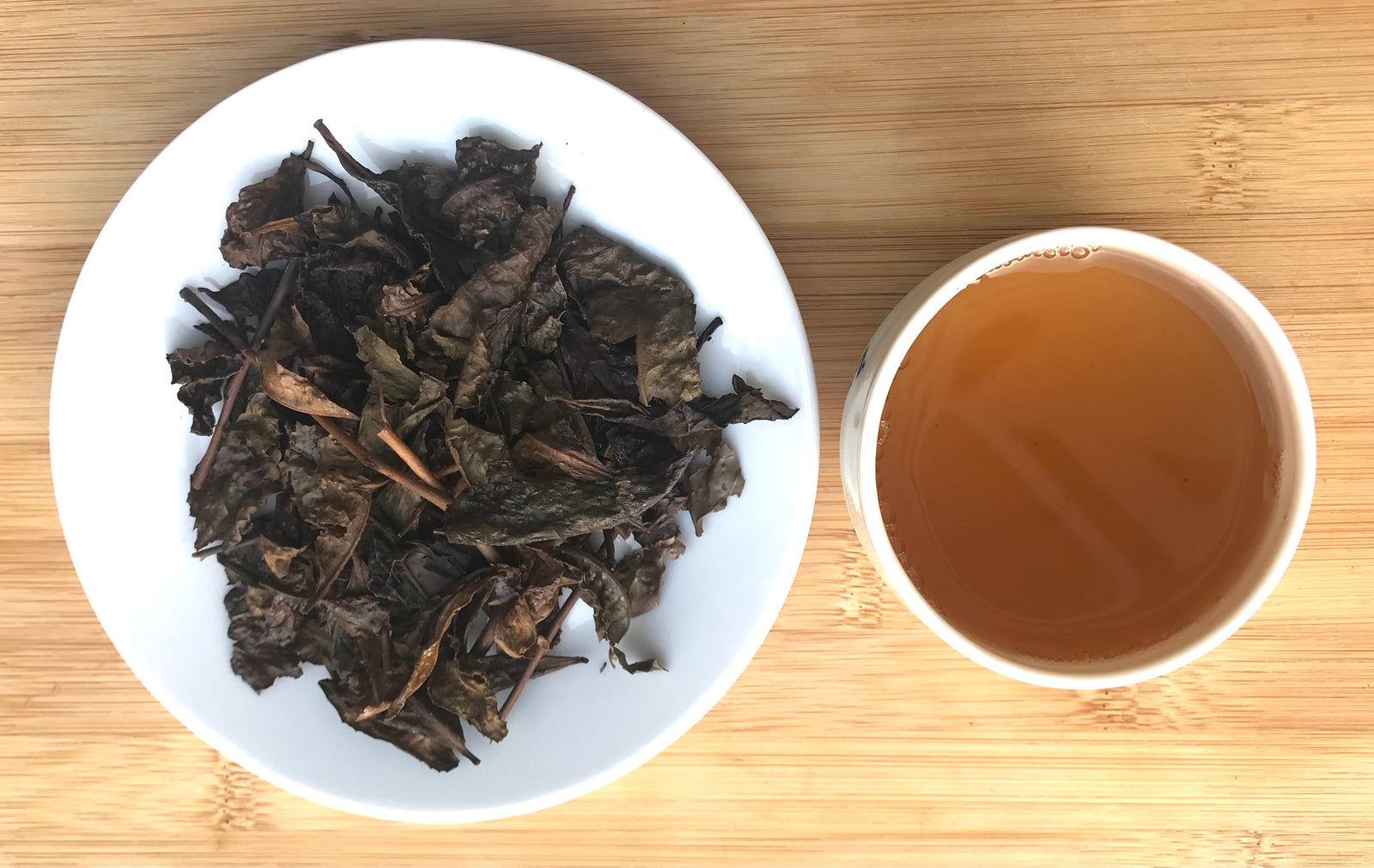岡山県といえば、どんなお茶を思い浮かべますか?
美作番茶と答えた方、まさにその通りです!大阪の西に位置する岡山県は、晴天の日が多く果物の産地( 備前焼でも有名)としてよく知られていますが、夏に作られる伝統的な番茶があります。具体的には、梅雨が明けてお盆が始まる7月中旬頃です。そう、一年で最も暑い時期です。美作番茶の特徴の一つは、その艶やかな琥珀色です。他の多くの地域の番茶と同様に、美作番茶の製造工程は非常に特殊です。
美作番茶の製造方法
- 茶葉は7月中旬から8月中旬にかけて茎とともに収穫されます。
- 収穫した葉と茎は、大きな鉄鍋で約40分から1時間煮込まれます。その間、葉は何度もひっくり返されます。


- 煮出した茶葉は藁の上に広げられます(天日干し)。現在では、青黒のビニールシートの上で天日干しされることが多くなっています。
- 茶葉が乾いたら、お茶を煮たときの煮汁をお茶に注ぎます。

- このプロセスは2〜3回繰り返されます。
- 最後の仕上げは、再び天日干しで完全に乾燥させることです。このお茶を作るのに、大変な手間がかかることは想像に難くありません。
この伝統的な番茶は、室町時代(1333-1573)に誕生し、日本の歴史上有名な剣豪であり哲学者である宮本武蔵の好物だったと言われています。興味深いことに、室町時代の文献の一つには、三大茶として狭山の武蔵、京都の山城、岡山の美作が挙げられていたと言われています。岡山県での茶栽培は、もともと美作市の南にある間木山の寺院で僧侶が茶を飲んでいたことから始まったとされています。そして、その後、この地域に茶栽培が広まりました。そのため、岡山県は主要なお茶の産地として最初に思い浮かぶ県ではないかもしれませんが、美作地域は番茶でよく知られています。
ほうじ茶がお好きな方なら、美作番茶はきっと気に入っていただけるでしょう。淹れたての茶葉は、茎ごと琥珀色に輝き、艶やかな艶やかな外観をしています。夏の太陽のエネルギーと熱から生まれた、深く豊かな風味を持つ、控えめながらも優しく美味しいお茶です。一般的に番茶はさっぱりとした味わいが主流ですが、美作番茶は独自の製法で、甘く丸みのあるまろやかな味わいに仕上がっています。暑い夏の疲れを癒すため、あるいは自分に優しくするために、ぜひ飲みたいお茶です。秋分の日も過ぎ、温かい飲み物が美味しい季節になりました。最近の私にとって、この番茶は元気の源となっています。柿や栗、 チーズといった秋の味覚と合わせて、この美味しい番茶を味わうのが楽しみです。
 風龍の美作番茶とマルシェの柿を温かい一杯。
風龍の美作番茶とマルシェの柿を温かい一杯。
日本の地域特有の番茶に関するさらに詳しい情報:
- 日本の伝統的な民芸茶を守る「茶園みとちゃ」の茶農家、栢下悠樹さんへのインタビュー
- 日本茶発見:三年番茶
- 冬に収穫される希少な日本茶「寒茶」
- 地域限定の擬音語茶
美作番茶の製造工程の写真は、 小倉茶園より提供されました。小田原を拠点とする小倉さんが、岡山県美作市でこの番茶の製造に携わった時のものです。


